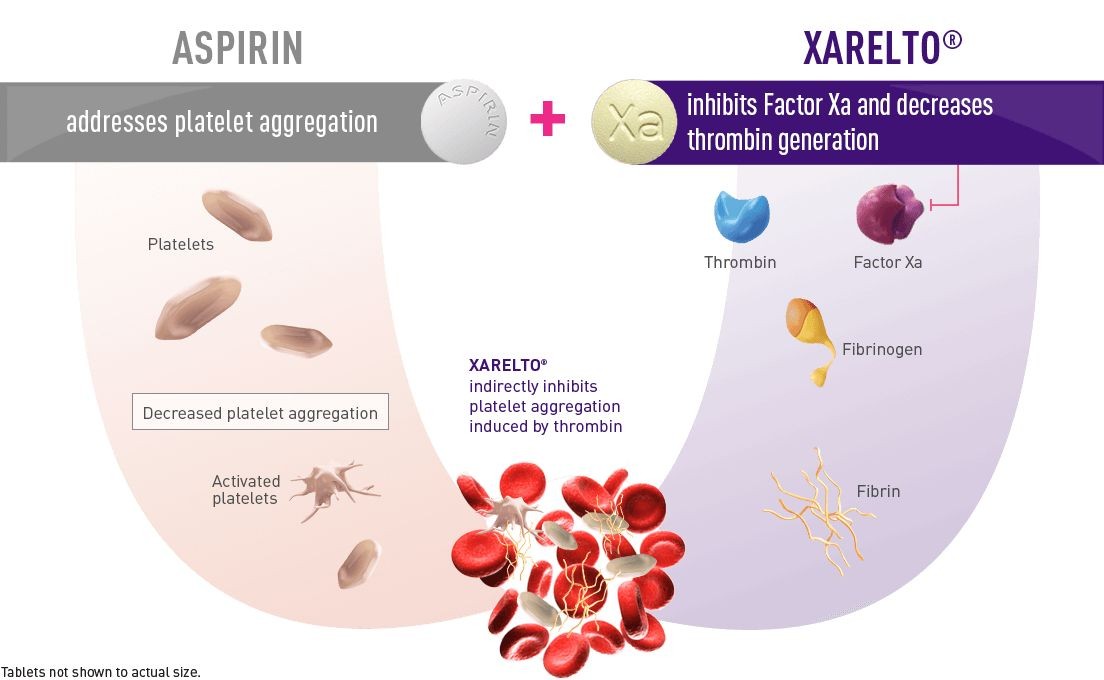
Contents
Plavix vs. Xarelto
Clopidogrel is an anti-platelet drug used to prevent strokes, heart attacks, and death in high-risk individuals with a history of heart attack, unstable angina, previous stroke, or peripheral arterial disease (PAD). It binds to the P2Y12 receptor on platelets, preventing the activation of platelets. Clopidogrel is similar to ticlopidine in structure and function.
Xarelto is a blood thinner used to prevent and treat blood clots. It inhibits factor Xa, an enzyme necessary for blood clot formation. Xarelto is used to reduce the risk of stroke and blood clots in patients with atrial fibrillation, treat deep vein thrombosis (DVT) and pulmonary embolism (PE), and prevent blood clots after hip or knee replacement surgery. It can also be used in combination with aspirin to reduce cardiovascular events in patients with chronic coronary artery disease or peripheral artery disease.
QUESTION
What are the side effects of clopidogrel and Xarelto?
Clopidogrel
The common side effects of clopidogrel include diarrhea, rash, itching, abdominal pain, headache, chest pain, muscle aches, and dizziness. It can also cause severe bleeding, allergic reactions, pancreatitis, and liver failure. Clopidogrel has a lower risk of side effects compared to ticlopidine.
Xarelto
The most common side effect of Xarelto is bleeding. It poses a higher risk of bleeding when taken with other medications that increase bleeding risk. Rare but serious cases of bleeding and paralysis have been reported in patients undergoing spinal or epidural procedures. Other side effects include back pain, itching, and elevated liver enzymes. Serious side effects include severe bleeding, hepatitis, decreased platelets, allergic reactions, and Stevens-Johnson syndrome.
What is the dosage for clopidogrel vs. Xarelto?
Clopidogrel
Clopidogrel is usually taken once daily. The recommended dose for treating unstable angina or heart attack is 300 mg initially followed by 75 mg daily. Peripheral arterial disease or recent stroke is treated with 75 mg daily.
Xarelto
- To reduce the risk of stroke in nonvalvular atrial fibrillation, patients with good kidney function should take 20 mg once daily with food.
- To treat DVT or PE, 15 mg is taken twice daily for the first 21 days, followed by 20 mg once daily for 6 months.
- To prevent recurrence of DVT or PE, 20 mg is taken once daily with food.
- To prevent DVT after hip replacement surgery, 10 mg is taken once daily for 35 days.
- To prevent DVT after knee replacement surgery, 10 mg is taken once daily for 12 days.
- Xarelto should be started when switching from other blood thinners or when the effects of warfarin are below 3.0.
- Use of Xarelto is not recommended in patients with liver disease.
What drugs interact with clopidogrel and Xarelto?
Clopidogrel
Combining clopidogrel with warfarin or other bleeding-inducing drugs increases the risk of bleeding. It should not be used with omeprazole, esomeprazole, fluoxetine, cimetidine, fluconazole, ketoconazole, voriconazole, ethaverine, felbamate, or fluvoxamine.
Xarelto
Xarelto should not be taken with ketoconazole, ritonavir, clarithromycin, erythromycin, fluconazole, carbamazepine, phenytoin, rifampin, or St. John’s Wort. It should also not be used with other blood thinners due to the increased risk of bleeding.
Are clopidogrel and Xarelto safe to use while pregnant or breastfeeding?
Clopidogrel
The safety of clopidogrel in pregnant women is unknown. It may appear in breast milk, so caution is advised for nursing mothers.
Xarelto
- Xarelto should be used in pregnancy only if the potential benefit justifies the potential risk to the fetus. Its safety in breastfeeding mothers is unknown.
- Use caution with Xarelto in nursing mothers.
By clicking Submit, I agree to the MedicineNet’s Terms & Conditions & Privacy Policy and understand that I may opt out of MedicineNet’s subscriptions at any time.
Summary
Plavix (clopidogrel) and Xarelto (rivaroxaban) are blood thinners used for preventing strokes, heart attacks, and death. They have different mechanisms of action and are used in various conditions. Xarelto is also used to treat and reduce the risk of blood clots in specific situations such as DVT, PE, and after hip or knee replacement surgery.


